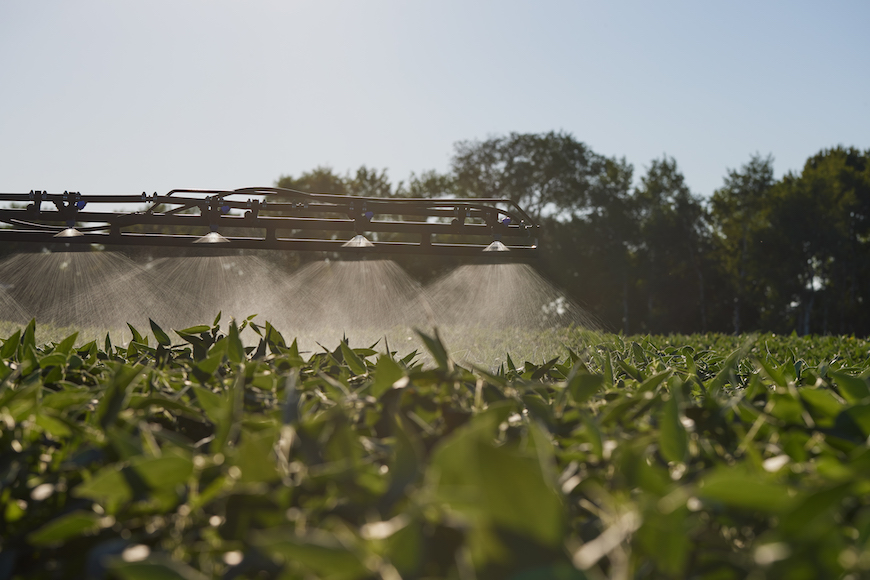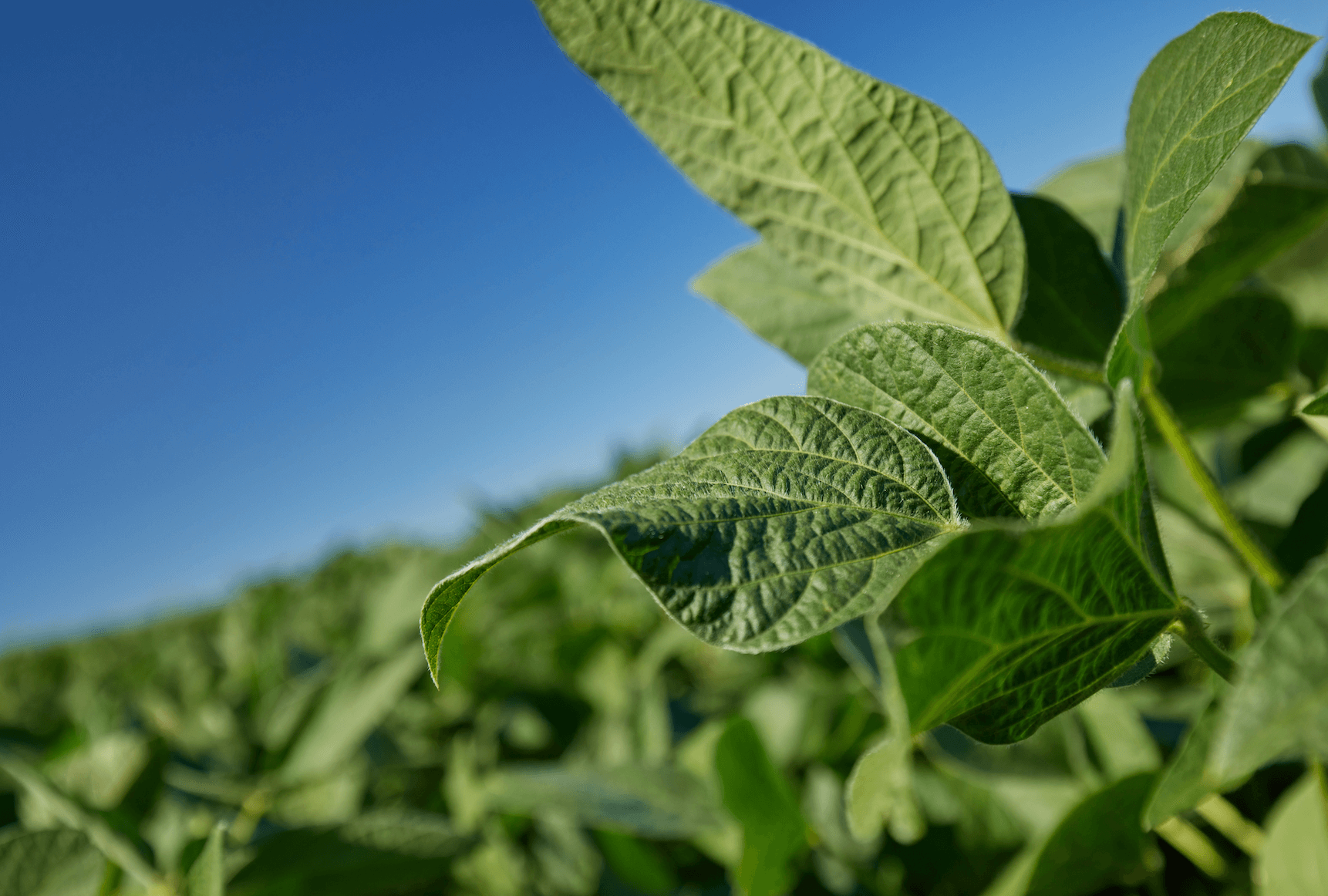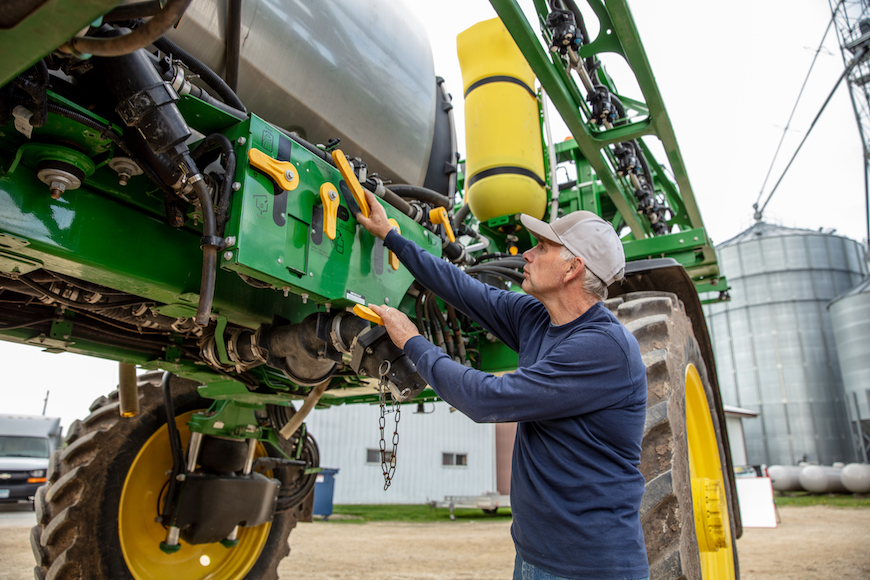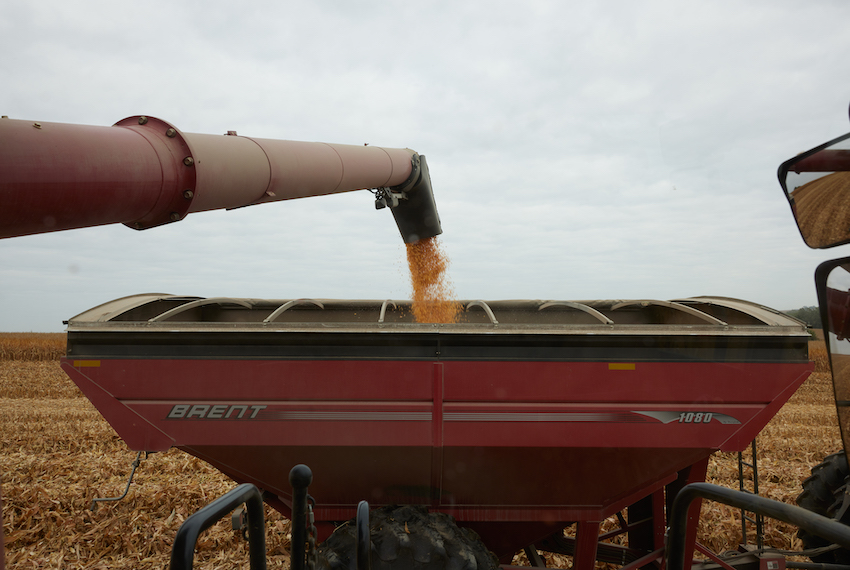Nov 25, 2025
Plan Ahead for Disease Management in 2026
Darrin Holder
Crop Protection Product Manager

With the strong disease pressures of the 2025 season, it’s a good idea to consider now how you’ll handle those potential threats in the upcoming one. Your crops (and your wallet) will benefit from a proactive approach to disease management. Here are six tips to plan ahead for 2026 and protect your corn and soybean fields from yield-robbing pathogens.
Depending on your geography, you may see wetter or drier conditions than normal in the year to come. If corn fields were inflicted by tar spot this year, you’ll likely see it again in 2026 as it can overwinter in most soils. This will largely impact producers in the north. In southern fields, wet, cool summers in recent years have increased the incidence of gray leaf spot and northern corn leaf blight. Should this trend return in 2026, these could be two high-pressure corn diseases in the south.
A fungicide application may be warranted before R3 and again at later growth stages in cases where disease infects plants early. Every situation is different, so work with your trusted advisor to fine-tune your plan in-season. Frogeye leaf spot, septoria brown spot and charcoal stem rot are diseases to scout for in your soybean crop.
MasterLock® adjuvant helps get more fungicide active ingredients deeper into the canopy, where many crop diseases develop, and improves leaf sticking and spreading for maximum coverage. Answer Plot® data shows a 5.7 bu/A corn yield increase when MasterLock adjuvant is added to the fungicide tank mix compared to spraying a fungicide alone.1 Additionally, trials found that MasterLock adjuvant delivers 6.2x more spray into the canopy when applied by drone.2
In addition to adjuvants, use adequate spray volumes to optimize crop coverage. For aerial applications, I recommend a minimum of 5 gallons per acre for sufficient coverage. If you’re planning a ground application, boost the spray volume to at least 15 gallons per acre. I’ve seen farmers increase the spray pressure to get more product deeper into the canopy, but I don’t recommend this practice. Increasing spray pressure increases the number of fine droplets, making the spray more susceptible to drift and reducing its ability to settle into the canopy. It’s more cost-effective and productive to use a proven adjuvant to realize the full potential of your fungicide application.
For example, weeds can serve as a host for disease pathogens and steal vital resources from the crop, making it less resilient to stress. Starting with clean fields and maintaining diligent weed control practices throughout the season is a good way to help reduce this opportunity for disease development. It’s also critical to manage plant nutrition to keep your crop strong and healthy so it can fight diseases. Insects can cause plant injury that facilitates the entrance of some plant pathogens, so scout fields and watch for damage that could invite diseases.
Response-to fungicide (RTF) scores are valuable for planning a disease management program. For moderate- to high-response hybrids, I recommend a fungicide application, regardless of disease pressure. On responsive hybrids, fungicides offer a plant health benefit even in the absence of disease. Keeping biomass healthier longer maximizes carbohydrate production, which ultimately increases yield potential. For hybrids that are less responsive to a fungicide, it may be possible to skip an application if disease pressure is low and environmental conditions aren’t conducive to further disease development.
As commodity prices fluctuate, the economic thresholds for managing diseases changes. If you held off on fungicide applications this year, 2026 is the year you’ll want to reinvest in your crop to maximize ROI potential. Cutting costs isn’t always the path to a successful season — oftentimes, spending the extra input dollars pays off in yield response and ROI potential. Your CROPLAN® local retail seed expert can help you build a disease management plan that matches your budget and agronomic needs.
1WinField United, 14 studies, eight states, all fungicides, 2012-2017.
2WinField United. Based on one trial, replicated three times, at the Innovation Center in River Falls, WI, in 2021.
All photos are either the property of WinField United or used with permission.
© 2025 WinField United. Important: Before use always read and follow label instructions. Crop performance is dependent on several factors many of which are beyond the control of WinField United, including without limitation, soil type, pest pressures, agronomic practices and weather conditions. Growers are encouraged to consider data from multiple locations, over multiple years and to be mindful of how such agronomic conditions could impact results. Answer Plot, MasterLock and WinField are trademarks of WinField United. All other trademarks are the property of their respective owners.
1. Keep a Pulse on Environmental Conditions
Environmental conditions play a critical role in disease development. Watch the forecast and pay attention to individual field conditions to help gauge the risk of disease development. Southern rust was one of the most widespread corn diseases we saw in 2025 and is one of the most detrimental overall. This wind-borne disease is carried north during summer storms and can cause substantial yield losses if it infects plants early. I advise farmers to pay attention to disease development in the areas to their south to prepare for a potential southern rust outbreak.Depending on your geography, you may see wetter or drier conditions than normal in the year to come. If corn fields were inflicted by tar spot this year, you’ll likely see it again in 2026 as it can overwinter in most soils. This will largely impact producers in the north. In southern fields, wet, cool summers in recent years have increased the incidence of gray leaf spot and northern corn leaf blight. Should this trend return in 2026, these could be two high-pressure corn diseases in the south.
2. Treat Soybeans Differently
Indeterminate soybeans continue to put on vegetative growth after hitting reproductive stages, making disease management trickier than corn. In general, an R3 fungicide application timing is most beneficial for soybeans. But, under favorable moisture conditions, indeterminate soybeans may stay at R3 for five or more weeks, requiring multiple fungicide applications to protect new vegetative growth. Later fungicide applications are a great time to include insecticides for extra protection against pod feeders that can also cause yield losses.A fungicide application may be warranted before R3 and again at later growth stages in cases where disease infects plants early. Every situation is different, so work with your trusted advisor to fine-tune your plan in-season. Frogeye leaf spot, septoria brown spot and charcoal stem rot are diseases to scout for in your soybean crop.
3. Consider Premium Fungicides
There are plenty of fungicides on the market, but to get the most bang for your buck, I recommend a premium product that contains two or more active ingredients. For example, some products contain a triazole for curative benefits, a strobilurin that offers curative and preventive benefits and a succinate dehydrogenase inhibitor (SDHI) active ingredient that boosts disease control and residual longevity. Newer triazole fungicides provide longer residual control for more effective disease protection than older chemistries and may offer a cost-effective alternative to multiple modes of action products.4. Improve Spray Coverage
Foliar-applied fungicides require adequate coverage for effective disease management because active ingredients are absorbed through the leaf’s tissue. If the fungicide doesn’t make it into the canopy or doesn’t stick to leaves once it gets there, your investment has literally gone into thin air. Adding an effective adjuvant to your fungicide tank mix can help optimize your spray’s coverage.MasterLock® adjuvant helps get more fungicide active ingredients deeper into the canopy, where many crop diseases develop, and improves leaf sticking and spreading for maximum coverage. Answer Plot® data shows a 5.7 bu/A corn yield increase when MasterLock adjuvant is added to the fungicide tank mix compared to spraying a fungicide alone.1 Additionally, trials found that MasterLock adjuvant delivers 6.2x more spray into the canopy when applied by drone.2
In addition to adjuvants, use adequate spray volumes to optimize crop coverage. For aerial applications, I recommend a minimum of 5 gallons per acre for sufficient coverage. If you’re planning a ground application, boost the spray volume to at least 15 gallons per acre. I’ve seen farmers increase the spray pressure to get more product deeper into the canopy, but I don’t recommend this practice. Increasing spray pressure increases the number of fine droplets, making the spray more susceptible to drift and reducing its ability to settle into the canopy. It’s more cost-effective and productive to use a proven adjuvant to realize the full potential of your fungicide application.
5. Think More Holistically to Manage Diseases
Diseases will make their way into your fields despite your best efforts to keep them out. While you can’t control how and when disease develops, you can manage your crop to defend against yield-reducing threats.For example, weeds can serve as a host for disease pathogens and steal vital resources from the crop, making it less resilient to stress. Starting with clean fields and maintaining diligent weed control practices throughout the season is a good way to help reduce this opportunity for disease development. It’s also critical to manage plant nutrition to keep your crop strong and healthy so it can fight diseases. Insects can cause plant injury that facilitates the entrance of some plant pathogens, so scout fields and watch for damage that could invite diseases.
6. Allocate Resources to Maximize ROI
It may not be economically feasible to apply fungicide on every acre. High input costs and lower commodity prices may require you to prioritize which fields you spray to maximize your ROI potential. Your local agronomist has access to data that can help you determine what hybrids and varieties are most likely to respond to a fungicide application.Response-to fungicide (RTF) scores are valuable for planning a disease management program. For moderate- to high-response hybrids, I recommend a fungicide application, regardless of disease pressure. On responsive hybrids, fungicides offer a plant health benefit even in the absence of disease. Keeping biomass healthier longer maximizes carbohydrate production, which ultimately increases yield potential. For hybrids that are less responsive to a fungicide, it may be possible to skip an application if disease pressure is low and environmental conditions aren’t conducive to further disease development.
As commodity prices fluctuate, the economic thresholds for managing diseases changes. If you held off on fungicide applications this year, 2026 is the year you’ll want to reinvest in your crop to maximize ROI potential. Cutting costs isn’t always the path to a successful season — oftentimes, spending the extra input dollars pays off in yield response and ROI potential. Your CROPLAN® local retail seed expert can help you build a disease management plan that matches your budget and agronomic needs.
1WinField United, 14 studies, eight states, all fungicides, 2012-2017.
2WinField United. Based on one trial, replicated three times, at the Innovation Center in River Falls, WI, in 2021.
All photos are either the property of WinField United or used with permission.
© 2025 WinField United. Important: Before use always read and follow label instructions. Crop performance is dependent on several factors many of which are beyond the control of WinField United, including without limitation, soil type, pest pressures, agronomic practices and weather conditions. Growers are encouraged to consider data from multiple locations, over multiple years and to be mindful of how such agronomic conditions could impact results. Answer Plot, MasterLock and WinField are trademarks of WinField United. All other trademarks are the property of their respective owners.
IF YOU LOVE OUR INSIGHT, YOU’LL LOVE OUR ROI POTENTIAL
Every successful harvest starts with a seed. It just can't end there. Choose which high-performing seed products you’ll start with this season.






